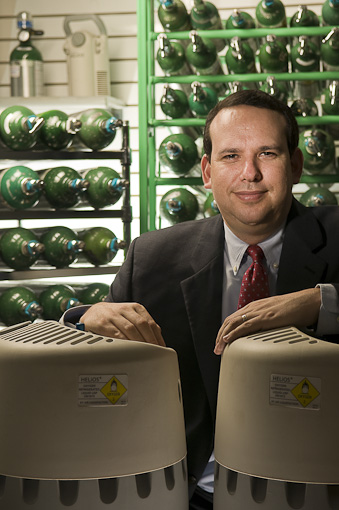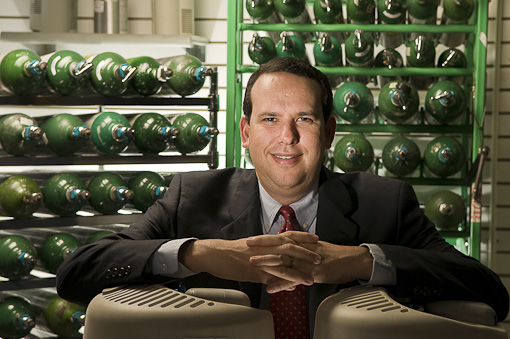A recent conversation with my teen aged daughter got me thinking about the bulk of the photography I do, shooting environmental portraits for magazines and corporations. I guess I’m really a problem solver, creating interesting photographs of people in usually very uninteresting surroundings - making something from nothing - and it’s a lot of fun.
I’ve been working on a multimedia project my daughter’s high school, which I will report about here soon, and some of her friends saw me on campus and asked her at lunch what I did for a living. When she answered that her dad was a photographer, they all said “Cool !”, implying an understanding that in our society photography is glamorous.
But I don’t shoot celebrities, professional athletes or rap stars, nor do big name travel magazines assign me to photograph tropical islands. My work is not glamorous, as a case history of an executive portrait shoot in a dingy warehouse will demonstrate.
My assignment was to create a compelling cover photograph of Rob Brant, owner of Miami’s City Medical Services, for Ascend Media’s HME Today, a small trade magazine covering the Home Medical Equipment supply industry. Rob had been very active in the trade’s effort to stay above the Medicare national billing fraud scandals plaguing a tiny portion of the industry, with Miami-Dade County being ground zero for hundreds of millions of dollars of government losses.
My photographic challenge began as soon as Rob showed me around his small warehouse situated in an industrial district. At first brush there were nothing interesting visually to work an environmental portrait around, with shelves and tiny passages jammed to the concrete ceiling with jumbles of wheel chairs, medical beds and breathing machines. There were no clean backgrounds, no sexy piece of medical machinery to set my composition around.
Poking around and scratching my head on my own for half an hour, I finally discovered two heavy racks of green oxygen bottles almost hidden in the corner by a garage door. At that point I was grateful for any color, and green caught my eye, as did the repetitive pattern offered by the storage racks. And the oxygen related to Rob’s business.
With warehouse staff help we dug the racks free and filled in the empty spaces with bottles from around the building. Now I had a background with potential visual interest, stuck in a dark corner.
I placed my first flash, a bare tube on a short stand behind the racks and against the cream colored wall, a space of only a few inches. A bare tube is simple flash unit about an inch in diameter and six inches long without modeling light, reflector or cooling fan, with a long cord attached. They are a lot of fun to hide and insert light in difficult spots. The flash bounced off the wall and all around to back light the racks and opened up the dark corner.
Now I needed to place my subject in front of the background, and turned an empty bucket upside down for a short stool. To hide the bucket, give Rob something to place his hands upon ( I think hands are very expressive in portraits ) and add more medical equipment clues to the photo, we rolled over two large tanks that take oxygen from the air. First we had to dig them out of the mess, unwrap them and clean them off.
My second flash was a three degree honey comb grid from camera left, a spot light that at this distance, four feet, lit just a six inch circle, to open Rob’s face with light and not throw extra light all over the set, destroying the mood I was creating.
At that point I thought the front of the oxygen generators were to dark, so I added light number four, pointed straight down from six inches above the gray concrete floor. Turned to very low power, it added just enough fill light at a cool upward angle to complete the shot.
With a warehouse worker sitting in, I adjusted the lights with flash meter and camera histogram, and about two hours after arriving I was photographing Rob for his first magazine cover.
I love it when I successfully create an environmental portrait that my client is happy with and was a challenge of logistics, aesthetics and photographic lighting. It’s fun, and to me, even a bit cool. But glamorous, sorry kids, I would have to say no.
Here's a link to more Miami corporate photography.



No comments:
Post a Comment